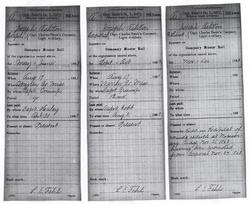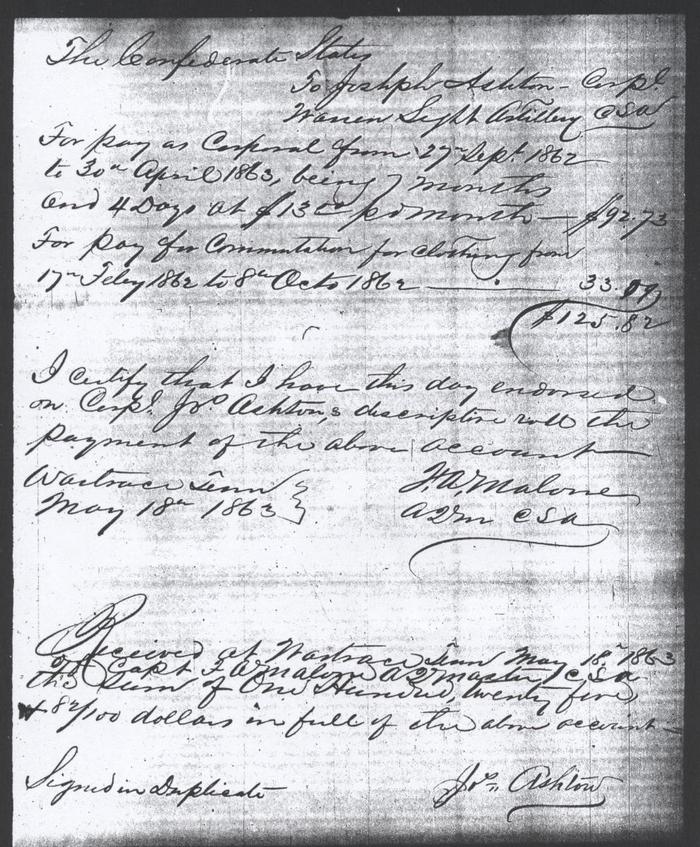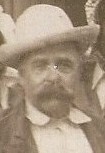His brother John, Alabama 58th, was captured at Missionary Ridge in Chattanooga, Tennessee. He was transported to Rock Island where he died of typhoid fever and is buried there.
His brother Samuel, from John's same Alabama 58th, escaped capture from Missionary Ridge.
Joseph and his family were originally from Franklin County, Georgia and moved to around Ashville, Saint Clair County, Alabama.
Joseph Ashton is my Great Great Grandfather.
Date 24th November 1863, Location Chattanooga, Tennessee at Missionary Ridge.
At 11 a.m. the first serious fight of the day commenced. It was heavy along Smith's whole line, and extended some distance south of the tunnel. The right of the enemy's line, exposed to the fire of several pieces of artillery planted over the tunnel, and met by a brigade sent by General Hardee to the foot of the ridge, swayed backward and forward for some time, but did not dare to advance nearer than 400 yards, and finally lay down, contenting itself with sending forward a large body of skirmishers and sending to the rear a much larger number of stragglers. The enemy's left, however, under shelter of Smith's abandoned work of the night before, and protected by the woods on that flank, and by the precipitous, heavily wooded sides of Tunnel Hill, advanced rapidly on Smith's line, and finally made a heavy charge on Swett's battery on the apex of the hill. The artillerymen stood bravely to their guns under a terrible cross-fire, and replied with canister at short range, but still the enemy advanced. When he had reached within 50 steps of the battery, Brigadier-General Smith charged him with the right of Mills regiment and the left of the Seventh Texas, Smith's north front pouring into him from the breastworks a close volley at the same tithe. The enemy was routed and driven back to his cover behind the hillside and abandoned work.
In this charge Brigadier-General Smith and Colonel Mills were both severely wounded at the head of their men. Col. H. B. Granbury, Seventh Texas, now assumed command of Smith's brigade. In less than half an hour the enemy made another desperate charge. He was met by the Texas men and artillery iii front. Douglas' battery enfiladed him from Govan's hill, and Lowrey's extreme left regiment got a long-range volley on his flank. He was driven back in confusion as before.
In these attacks Lieut. H. Shannon, commanding Swett's battery, was wounded. The command devolved on Lieut. Joseph Ashton; in a few minutes he was mortally wounded. The command then fell on Corpl. F. M. Williams. So many non-commissioned officers and men had been killed and disabled in the battery, Colonel Granbury was forced to make a detail from the infantry to work the guns. There was now a short lull in the battle, during which, at the request of Colonel Granbury, I detailed the Second, Fifteenth, and Twenty-fourth Arkansas (consolidated), under Lieutenant-Colonel Warfield, from Govan's left, and posted them immediately in rear of the battery on top of the Tunnel Hill. I sent two of Swett's 12-pounders to report to Colonel Govan, as Douglas' guns were too light to be effective in their present position. I ordered Key's battery of four light field pieces to move up and replace the guns sent off, and put Lieutenant Key in command of all the artillery on Tunnel Hill.
Read the after action report by Maj. Gen. Patrick R. Cleburne in it's entirety at the web site listed below. http://www.swcivilwar.com/CleburneMissionaryRidgeReport.html
His brother John, Alabama 58th, was captured at Missionary Ridge in Chattanooga, Tennessee. He was transported to Rock Island where he died of typhoid fever and is buried there.
His brother Samuel, from John's same Alabama 58th, escaped capture from Missionary Ridge.
Joseph and his family were originally from Franklin County, Georgia and moved to around Ashville, Saint Clair County, Alabama.
Joseph Ashton is my Great Great Grandfather.
Date 24th November 1863, Location Chattanooga, Tennessee at Missionary Ridge.
At 11 a.m. the first serious fight of the day commenced. It was heavy along Smith's whole line, and extended some distance south of the tunnel. The right of the enemy's line, exposed to the fire of several pieces of artillery planted over the tunnel, and met by a brigade sent by General Hardee to the foot of the ridge, swayed backward and forward for some time, but did not dare to advance nearer than 400 yards, and finally lay down, contenting itself with sending forward a large body of skirmishers and sending to the rear a much larger number of stragglers. The enemy's left, however, under shelter of Smith's abandoned work of the night before, and protected by the woods on that flank, and by the precipitous, heavily wooded sides of Tunnel Hill, advanced rapidly on Smith's line, and finally made a heavy charge on Swett's battery on the apex of the hill. The artillerymen stood bravely to their guns under a terrible cross-fire, and replied with canister at short range, but still the enemy advanced. When he had reached within 50 steps of the battery, Brigadier-General Smith charged him with the right of Mills regiment and the left of the Seventh Texas, Smith's north front pouring into him from the breastworks a close volley at the same tithe. The enemy was routed and driven back to his cover behind the hillside and abandoned work.
In this charge Brigadier-General Smith and Colonel Mills were both severely wounded at the head of their men. Col. H. B. Granbury, Seventh Texas, now assumed command of Smith's brigade. In less than half an hour the enemy made another desperate charge. He was met by the Texas men and artillery iii front. Douglas' battery enfiladed him from Govan's hill, and Lowrey's extreme left regiment got a long-range volley on his flank. He was driven back in confusion as before.
In these attacks Lieut. H. Shannon, commanding Swett's battery, was wounded. The command devolved on Lieut. Joseph Ashton; in a few minutes he was mortally wounded. The command then fell on Corpl. F. M. Williams. So many non-commissioned officers and men had been killed and disabled in the battery, Colonel Granbury was forced to make a detail from the infantry to work the guns. There was now a short lull in the battle, during which, at the request of Colonel Granbury, I detailed the Second, Fifteenth, and Twenty-fourth Arkansas (consolidated), under Lieutenant-Colonel Warfield, from Govan's left, and posted them immediately in rear of the battery on top of the Tunnel Hill. I sent two of Swett's 12-pounders to report to Colonel Govan, as Douglas' guns were too light to be effective in their present position. I ordered Key's battery of four light field pieces to move up and replace the guns sent off, and put Lieutenant Key in command of all the artillery on Tunnel Hill.
Read the after action report by Maj. Gen. Patrick R. Cleburne in it's entirety at the web site listed below. http://www.swcivilwar.com/CleburneMissionaryRidgeReport.html
Family Members
Other Records
Advertisement
Advertisement














